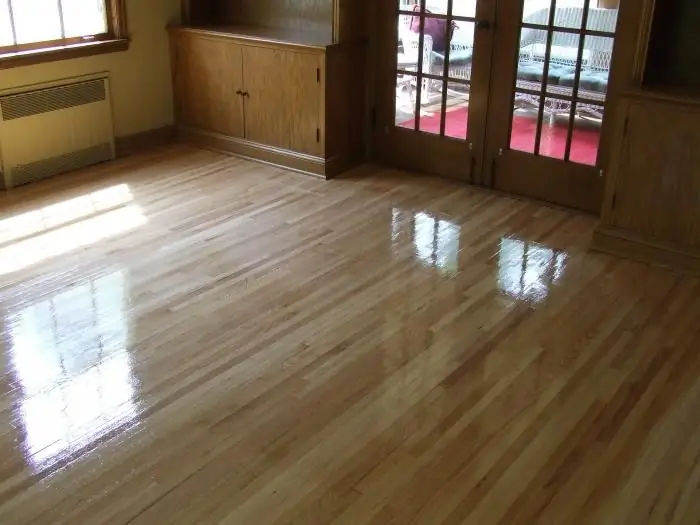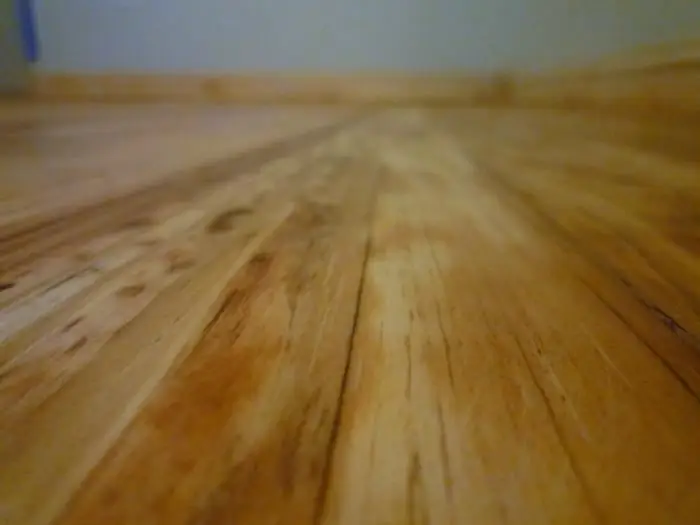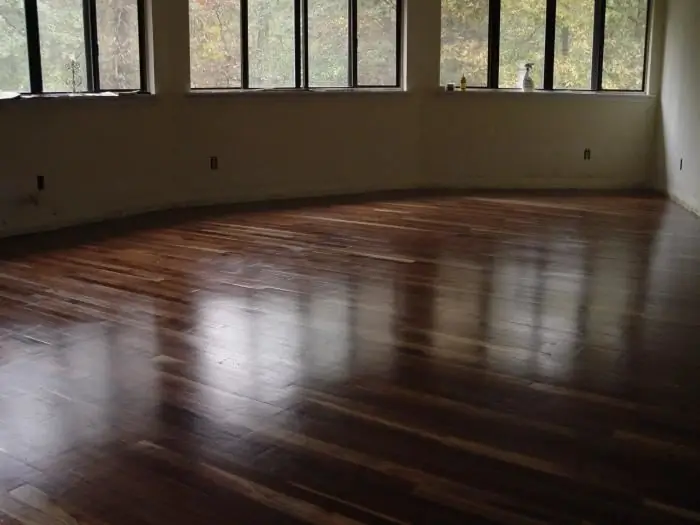With every repair, sooner or later the question of choosing a floor covering arises. And if you prefer natural finishes, you will definitely have to choose a floor lacquer. When choosing, you need to take into account what kind of load the surface will be subjected to: either they will walk on the floor in soft slippers, or a huge number of people in street shoes will pass daily. Wear resistance is a very important characteristic of a protective coating.

Types of varnishes
- Water-based floor varnish is the most durable. It can be used in rooms where varnishes with chemical solvents cannot be used, for example, in fire-prone buildings. In order for the varnish to dry properly and well, it is necessary that the room is 50% damp, and it must be applied with a roller on a primer layer.
- Alkyd floor varnish is more durable than water-based, but inferior to polyurethane and acid counterparts. They include resins produced from a natural ingredient - linseed or wood oil. Thanks to such components, the liquid penetrates deep into the wood, so it is appropriate to use it where there are large differences in temperature and humidity. Lack of varnish- its unpleasant pungent odor due to white spirit included in the composition. If you apply it in several layers, the surface will be uneven, and it is impossible to dry the floor at a high temperature.
- If you have to protect a surface that will be subjected to heavy loads, it is recommended to choose a polyurethane varnish for a wooden floor. It is appropriate to use it for garden, stairs, doors, as it is elastic and heat resistant. But on contact with water, this varnish begins to bubble.
- The most durable floor varnish is acid-cured. It is based on formaldehyde, and the surface does not need to be primed before application. The floor will remain in its original form even with large differences in temperature and humidity. You can cover the floor with a roller, brush or spray gun, but before work, you should wear a mask or respirator: the varnish emits a too strong smell, but after thorough ventilation, the unpleasant odor disappears.

The right choice of varnish
When buying, pay attention to the purpose of the room: for example, waterproof varnishes are suitable for kitchens and bathrooms, and it is appropriate to use abrasion-resistant varnishes for the living room and stairs, in the nursery it is recommended to cover the floor with a non-hazardous water-based varnish. Polyurethane and polymer varnishes are ideal for public places and work areas. If the varnish is based on several harmful solvents, it should be discarded.

Amount of polish and application features
Standard consumption of varnish applied in one layer - 1 liter per 10 square meters. m. Parquet must be covered with three layers, in addition to the primer. For good drying, it is necessary that the air temperature is not higher than 22 degrees, but not too low. A day after coating, it is already possible to move around the floor, and it is advisable to bring cabinets and sofas into the room after 3-14 days. To protect the floor from scratches, special felt heels should be put on furniture legs. Please note that light woods darken after varnishing, while dark woods usually lighten. And sometimes, under the influence of the chemical composition, the color of the board can change dramatically.






